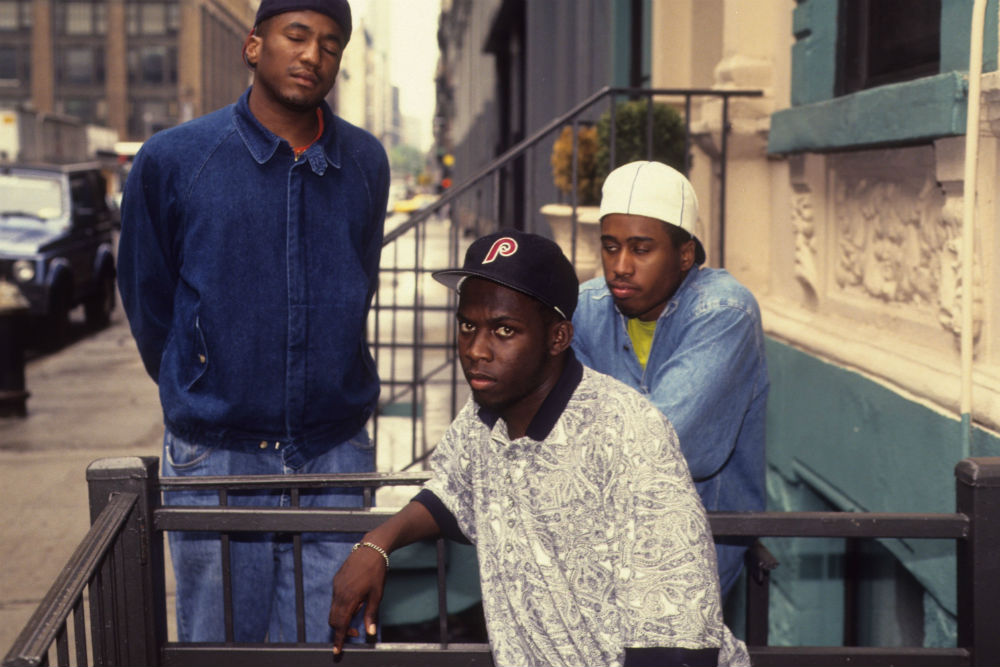“Stop trying to front like I’m Tito or some shit. And no disrespect to Tito.” — Phife Dawg
When you woke up yesterday and saw that Malik “Phife Dawg” Taylor had passed away, which detail tripped you up? Tragic as it was, the Tribe legend had been open about his health problems for decades — the funky diabetic received a kidney transplant from his wife in 2008, but at the time of his death was back on the transplant list. By the end of the second Bush administration, he was hooked up to a dialysis machine three times every week. The notion that he might meet an early demise was never far from some fans’ minds. So the tributes cluttered your digital feeds, your radio playlists, and the sound systems of the cars up and down your block. They were to be expected, and they were well-deserved. But there was one little piece that still looked like a misprint: 45.
Phife was only 45. That doesn’t make him an outlier, per se; Ice Cube is 46, RZA is 46, Busta Rhymes is only 43. Q-Tip’s 45, too — he and Phife were in the same second-grade class in Queens. But doesn’t Tribe seem a world away? It’s tempting to break the history of rap into distinct periods, to carve out months here for G-funk or years there for boom-bap, to trace Kangols to dashikis to Timbs to shiny suits. But the truth is that at any given moment, different sounds, different ideologies, different worlds are bleeding into and over one another. (Midnight Marauders and Enter the Wu-Tang (36 Chambers) came out on the same day in 1993.)
Hip-hop has a way of coming unmoored in time, through the samples and the stories that make up its component parts. Fans talk about the energy Phife brought to A Tribe Called Quest, and they often credit his voice or his kinetic style of rhyming. But what really gave Phife’s verses the sense of urgency that makes them so unmistakable, and so quotable, was his tunnel vision for the present. He rapped in the here and now, as if the Minnie Riperton was being chopped up right in front of you. Some rappers are historians, some are fatalists. Some — including Tip, to be sure — float through time with no regard for its rules, skipping into the past or the future as they see fit. In that sense, he and Phife were perfect foils for one another. Two kids got a time machine, and one stayed behind to hold the fort.
“Excursions” opens back in the day, when Tip was a teenager, and leaps forward “all the way to Africa, a.k.a. the motherland.” On “8 Million Stories,” Phife is just trying to go to Carvel. (The big past-present split on that song is “Just last week my girl was stressing me / Now her best friend be undressing me.”) And when Tip was wrestling with life and death and blackness and the Brothers Grimm, Phife was wrestling with Jive: “I be three albums deep but I don’t wanna go pop.” It was the equivalent of breaking the fourth wall for a group that otherwise existed in a universe all its own. As surely as Q-Tip was the Abstract, Phife was the opposite of that.
And has anyone in the history of hip-hop been better at rapping about sports? With Phife, it wasn’t just great athletes as measures of success. When he compared his stature to that of Muggsy Bogues, you could round out the comparison: the brashness, the audacity. He would take time out of his verses to point out the holes in Vinny Testaverde’s game, to recall Buster Douglas being knocked out, to point out that Mario Lemieux was basically as good as Wayne Gretzky when the cancer wasn’t in the way. Tragedy came when John Starks got ejected from the Knicks game his girl bailed on. His post-rap career as a basketball recruiter (for South Kent, a prep school in Connecticut) aside, Phife was a reflection of how so many people mark time: through the heartbreak, optimism, and rhythm that sports bring to life.
By 1993, when Phife and Tip were 23, Tribe was one of the biggest groups in New York, and probably in the world. They’d put out three albums, and had already been through the varying stages of a meteoric rise. People’s Instinctive Travels and the Paths of Rhythm, despite having three of the group’s most famous songs — “Bonita Applebum,” “Can I Kick It?,” “I Left My Wallet in El Segundo” — didn’t crack any commercial ceilings. (It should be noted that “El Segundo,” the strongest song on the record, owes plenty to Phife’s detail-oriented style of storytelling, despite his lack of direct involvement.) But The Low End Theory and Midnight made Tribe genuine superstars, a curious position for a five-foot-three kid from Linden Boulevard. And whatever was happening behind the scenes, on record Phife was keeping Tribe grounded, chiding sucker MCs and dapping EPMD. He was the point of balance, the road in for listeners who needed a few warm-up laps before following Tip into the ether.
Michael Rapaport’s 2011 documentary on Tribe was celebrated for how it captured the personal friction between Phife and Tip, especially the fallout from the 2008 Rock the Bells reunion that was meant to help finance Phife’s medical care. To hear each of the MCs tell it, the things that pushed them apart were routine for rock stars. The clashing schedules, fretting over money and credit — all of it added up to the sort of wedge that grows between nearly any set of friends if you track them for long enough. Unremarkable.
What deserves attention are the mysterious forces that bound them together, that pushed Tribe to become one of the greatest, most daring, and ultimately most important groups in the history of music. Some acts are great because they’re simply better at the craft than anyone else; some transcend because they tap into an idea that was previously unexplored. Tribe did both, and they made it seem effortless and instinctual. And Phife, who found so much joy, sorrow, and life in what was right in front of him, lives on.





